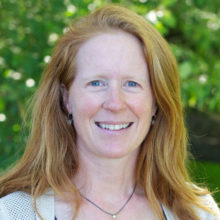As communities brace for the arrival of coronavirus, public health officials are concerned about rural hospitals’ capacity to accommodate patients. The forecasted waves of cases will arrive in rural communities already under stress from opioid addition, economic transition from natural resources, and hospital closures.
Research conducted by Headwaters Economics in partnership with High Country News finds that 1.8 million people 65 years and older (4% of all U.S. seniors) live in a county without a hospital. Eighty-six percent of counties with no hospital beds have greater than average senior population, and most of those counties are rural.
Almost one in five U.S. counties has many seniors and no hospital beds.
This analysis includes all general acute-care hospitals and critical access hospitals in the U.S. The analysis also includes hospitals classified as “special,” which includes some surgical and specialty hospitals, as well as smaller hospitals like Wood River Medical Center in Blaine, Idaho. It does not include military, children’s, women’s, long term care, psychiatric, rehabilitation, or chronic disease facilities that are already being repurposed in some areas. The analysis also does not address the level of care available nearby or distance to the closest care, only whether there is any care nearby.
In this analysis we find wide variability between states in the share of seniors who have no access to hospitals. Virginia has the largest share of its senior population living without a hospital (24%). In the Midwest and western states where counties cover large distances such as North Dakota and South Dakota—16% and 10% of seniors without a hospital, respectively—the lack of a hospital in the county means much longer trips to health care.
The coronavirus will strain rural counties differently than their urban counterparts with long commutes to health care and aging populations. States and communities are developing response plans to the coronavirus and triaging health care resources. These planning efforts must recognize the vulnerability of communities with many older residents and no nearby hospital. Strict adherence to policies to slow the virus’ arrival and spread could help existing health care resources keep up. Strategies specific to isolated communities such as mobile testing and the transport of ill patients can facilitate responses once the virus arrives.
This page and data visualization were updated on March 19, 2020 to include hospitals classified as “special.” The analysis uses publicly available federal data. We will update this page as more precise local data are available.

Find information about vulnerable populations in your community using our Populations at Risk tool.




